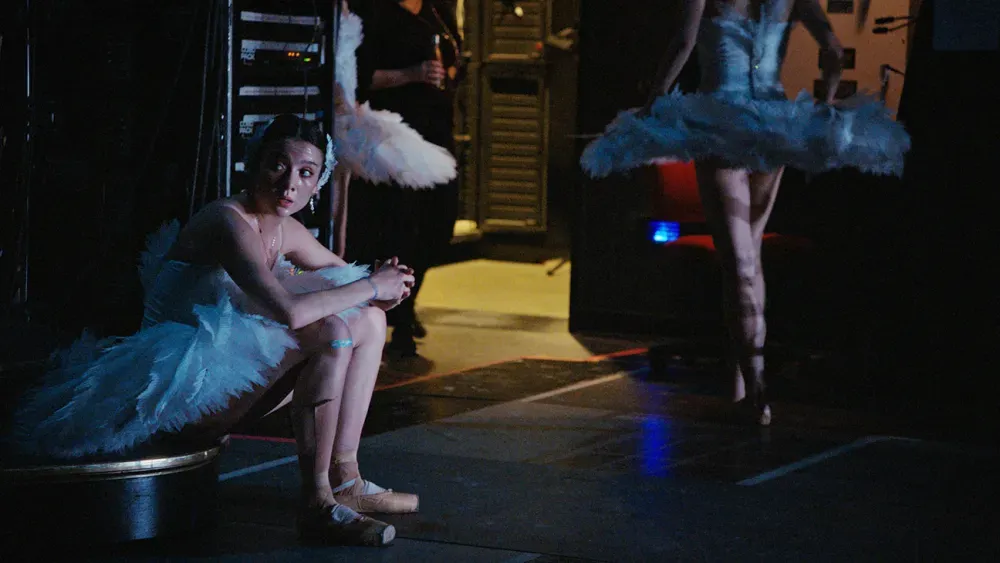A few years ago, before stepping down as the artistic director of the National Ballet of Canada, Karen Kain decided to take on the challenge of directing a show. “We needed a new Swan Lake,” she remarks at the beginning of the documentary Swan Song, “and I thought: I want to try to find the courage to do this.”
 |
| 'Swan Song' COURTESY OF GREENWICH ENTERTAINMENT |
Kain, a former ballerina who trained at NBC, made her debut as Swan Queen in the company’s 1971 production. She was later mentored by Soviet dancer and choreographer Rudolf Nureyev, who played a pivotal role in advancing her career.
Kain achieved both domestic and international acclaim, and her fame was cemented when Andy Warhol created a portrait of her. Canadians fondly referred to her as the nation’s Princess Diana.
Directed by Chelsea McMullan, Swan Song chronicles Karen Kain's journey to direct Swan Lake during her final year at the National Ballet of Canada. Kain had planned to retire in 2020, but the COVID-19 pandemic forced the company to halt the show three months before its opening night.
McMullan’s documentary, which premieres on July 26 in select theaters and on demand, begins by acknowledging this significant setback. As a result, Kain postponed her retirement, and Swan Song picks up two years after the shutdown, eight weeks before the new debut.
The entire company, from Kain to the dancers, faces immense pressure to stage an ambitious and contemporary production of Tchaikovsky’s ballet while also attempting to recover some of the financial losses incurred during the early pandemic.
There are many dynamic elements in Swan Song, which is why this feature has an accompanying four-part docuseries that premiered in Canada last fall. The pandemic extended McMullan and their team’s timeline, giving the crew two years to embed themselves within the company before rehearsals resumed. Swan Song captures only a fraction of this extensive investment — the information gathered, the emotions felt, the experiences documented.
Despite Brendan Mills’ (Quickening) proficient and assured editing, the documentary can sometimes feel abrupt. McMullan addresses a plethora of topics — Kain’s career, her ambition to modernize aspects of Swan Lake, racism in ballet, eating disorders, and class issues — each of which could have warranted its own hour-long episode. Often, time constraints can invigorate a documentary; here, they evoke a desire for more.
What McMullan presents offers an insightful look into the complex, dramatic, and occasionally tense world of the National Ballet of Canada. The physical, emotional, and psychological stamina demanded from the dancers is evident from the moment Jurgita Dronina, a determined Russian-Lithuanian dancer with a warm smile, appears on screen.
She briefly explains the structure of the company, including the corps de ballet, soloists, and principal dancers like herself. In this early part of the documentary, McMullan also introduces Shaelynn Estradra, a corps dancer from Texas, whose working-class background and mental health struggles sometimes clash with her ambitions to become a principal ballerina.
At one point in Swan Song, Estradra describes ballet as both a personal “angel” and “demon.” The testimonies of Kain, Dronina, Estradra, and other interviewees collectively form a striking portrait of the past, present, and future of modern ballet.
McMullan supplements Kain’s stories of the past with archival footage of her own performances in Swan Lake, along with interviews with dance scholars and critics like Seika Boye and Paula Citron. Boye discusses the significance of certain elements within Swan Lake — such as the crucial role of the corps — and addresses the structural issues and history of exclusion within ballet.
A significant source of tension in Swan Song revolves around Kain’s decision to forgo tights among the corps dancers. The artistic director understands the traditional role of white nylon but believes that showing the performers' bare legs will lend a more contemporary feel to the piece.
Choreographer Robert Binet is tasked with bringing Karen Kain’s vision to life, serving as a patient and steady presence throughout the documentary. He corrects the corps dancers, reminding them to move faster to keep in time with the music, and challenges Kain with a gentle but firm command.
Binet navigates the delicate balance of aligning a director’s vision with the dancers’ abilities with admirable grace. His emotional support is palpable in nearly every scene of Swan Song, whether he is scanning the ensemble during rehearsals or offering reassurance to individual dancers in private conversations.
Binet’s technical expertise is also evident, especially in the final act of Swan Song, where the company is abuzz with the nervous energy of opening night. Director Chelsea McMullen, along with DPs Tess Girard and Shady Hanna, captures the bustling theater lobby and the dancers applying thick eyeliner and hairspray.
Brendan Mills’ editing becomes more dynamic in these scenes, mirroring the haunting aesthetic of Quickening, another film about the grueling demands of dance.
When the performers take the stage, Swan Song becomes electric. Close-ups of the dancers invite us to feel the intensity of their performance: beads of sweat rolling down chests, muscles tightening as they leap and land. Watching these lithe bodies glide across the stage, one is reminded of Kain’s driving desire.
Tired of academic renditions of Swan Lake, she set out to leave the company with an emotional ovation. “I want to be moved,” she said. “It’s theater, you know; I want to cry.” That night, surely, there was no dry eye in the house.

0 Comments